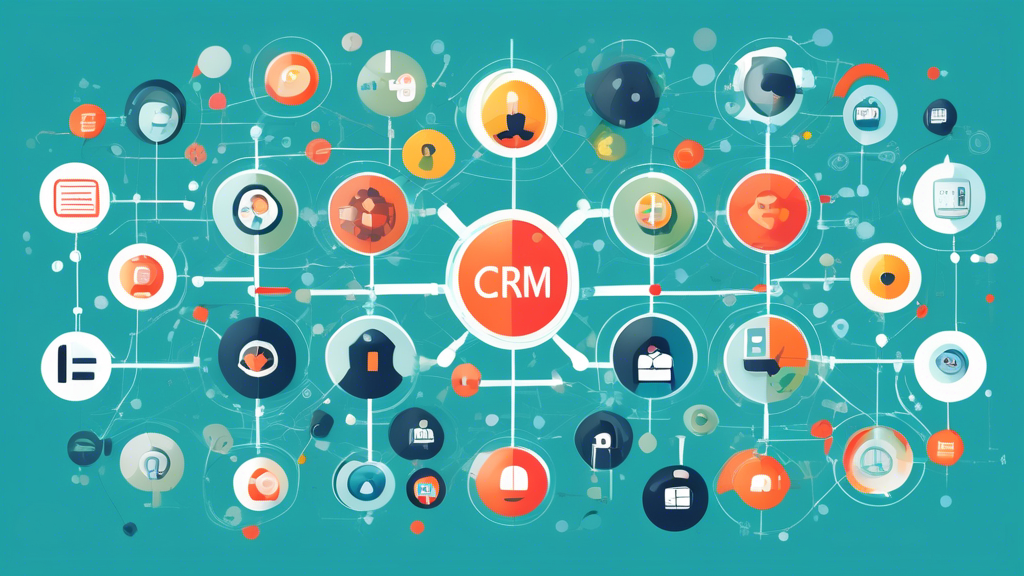Unlocking the Potential of Customer Relationship Management Systems
In today’s fast-paced and digitally driven marketplace, understanding and implementing an effective Customer Relationship Management (CRM) system isn’t just advisable; it’s essential. As businesses strive to not only retain loyal customers but also to attract new ones, the role of a CRM system transcends mere data collection—it becomes the heart of customer engagement and business growth. By the end of this guide, not only will you grasp the core principles and benefits of CRM systems, but you might also find yourself wondering how you ever managed without one. And who knows, you might even learn a neat party trick or two—like how to levitate customer satisfaction ratings through the roof (figuratively, unless you’re also a magician).
Understanding the CRM System: A Bird’s Eye View
At its core, a Customer Relationship Management system is a technological platform that helps businesses manage and analyze customer interactions and data throughout the customer lifecycle. The goal? To improve business relationships, assist in customer retention, and drive sales growth. Think of a CRM as the ultimate digital butler, adept at anticipating your customer’s needs, preferences, and even future interactions, all without the need for a top hat or tails.
The Anatomy of a CRM System
A CRM system is not a monolithic piece of technology but rather a suite of tools, applications, and features designed to streamline and enhance various aspects of customer engagement. These typically include:
- Contact Management: Keeping track of customer contact information and relevant details.
- Sales Management: Tracking sales pipelines, leads, and conversions.
- Marketing Integration: Automating and managing marketing campaigns and leads.
- Customer Support: Managing customer inquiries, support tickets, and feedback.
- Analytics and Reporting: Offering insights into customer behavior, sales trends, and more.
Why Businesses Swear by CRM Systems
Imagine having the ability to look into a crystal ball and predict your customers’ next moves, desires, and even grievances. That’s the power a well-oiled CRM system offers. It’s why businesses across industries invest in them. By leveraging data-driven insights, companies can enhance communication, streamline operations, and deliver personalized customer experiences—all of which are crucial in today’s competitive market.
Choosing the Right CRM System
Not all CRM systems are created equal, and choosing the right one can feel a bit like finding the perfect pair of shoes. It’s not just about the size (or price) but about the fit, style, and purpose. Here are a few key factors to consider:
- Scalability: Can the CRM grow as your business does?
- Customization: Is it flexible enough to meet your specific business needs?
- Integration: Does it play well with other systems and software you use?
- User-Friendliness: Will your team actually enjoy using it, or will it become the dreaded digital paperwork?
- Support and Training: What resources are available to get you and your team up to speed?
Choosing the right CRM is a significant decision—one that can dramatically affect your business’s trajectory. But remember, the most expensive or popular option isn’t necessarily the best fit for you. It’s about matching your needs, goals, and resources with the right tool.
Implementing a CRM System: Best Practices
So, you’ve selected your shiny new CRM system—congratulations! Now comes the potentially daunting task of implementation. But fear not, because like any good recipe, a successful CRM rollout is all about following some key steps:
- Involve Your Team: Include team members from different departments in the planning and implementation process. After all, they’re the ones who will be using it daily.
- Cleanse Data: Start with clean, organized data to avoid clutter and confusion down the line.
- Provide Training: Ensure everyone understands how to use the CRM effectively. Yes, even Dave from Accounting who still uses a flip phone.
- Integrate Gradually: Implement the CRM in phases to avoid overwhelming your team and to iron out any kinks along the way.
- Gather Feedback: Regularly collect input from users to improve and adapt the system to your business’s evolving needs.
Remember, implementing a CRM system is not a one-and-done affair; it’s an ongoing process of improvement and adaptation.
Maximizing the Value of Your CRM System
Merely having a CRM system in place isn’t enough. The real magic happens when you actively leverage its capabilities to enhance customer relationships and drive business growth. Here are some quick tips to get the most out of your CRM:
- Personalize Customer Interactions: Use data to tailor your communication and offers, making each customer feel like the VIP they are.
- Analyze and Act on Data: Regularly review the data and insights generated by your CRM to inform business decisions and strategies.
- Automate: Take advantage of automation features to save time and reduce manual tasks, so you can focus on what truly matters—growing your business.
Conclusion: CRM Systems as Your Growth Partner
In essence, Customer Relationship Management systems are not just about managing customers—they’re about understanding them, engaging with them, and building lasting relationships that drive satisfaction, loyalty, and growth. Choosing and implementing the right CRM can seem daunting, but with the right approach, it becomes an invaluable asset to your business.
Remember, while a CRM system can provide the tools and insights, it’s up to you to turn that into meaningful actions and outcomes. Just like you can’t expect a gym membership alone to get you in shape, a CRM system requires active engagement and utilization. And hey, if you need help setting up those digital weights, we’ve got your back.
Feeling inspired to elevate your customer relationships and drive your business forward? Visit starmetaversegeorgia.com for all your web development needs and more. Let’s embark on this growth journey together, transforming potential into success.

Comments are closed